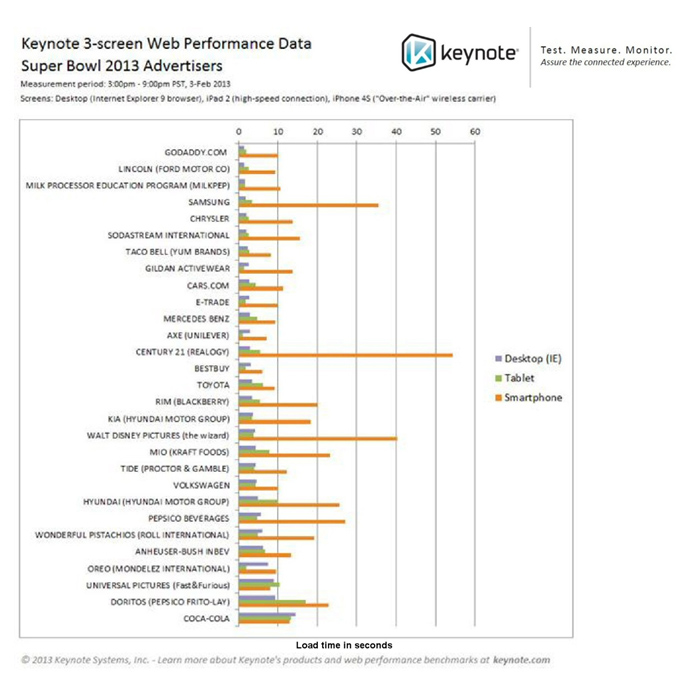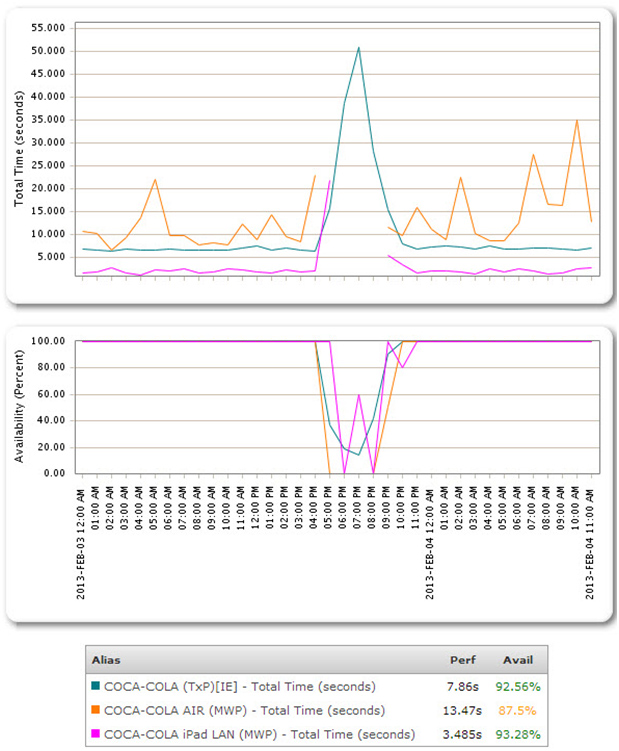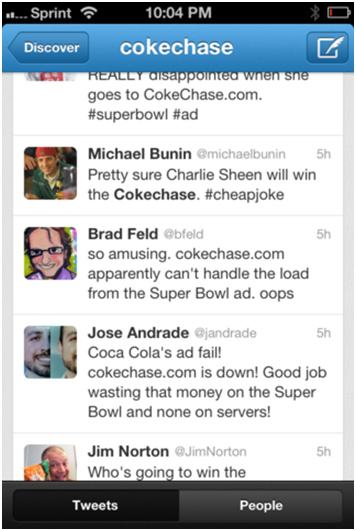Every year, the Super Bowl represents a huge opportunity for advertisers to capitalise on their significant investment in air time by engaging consumers beyond the television – on their laptops, tablets and smartphones. As a result of these campaigns, brands know that advertising on TV at peak times with high viewing figures produces huge surges in online traffic. Without proper planning and preparation, this can create a very poor customer experience online.
This year, Keynote closely monitored the online performance of the Super Bowl advertisers across all 3 screens – tablet, laptops and smartphones – to see how well brands prepared to engage with consumers. Here are the results:
Mobile performance is misunderstood
There are huge differences between traditional desktop Web performance, and mobile performance. By analysing the results of comparisons between desktop Web and mobile performance, it’s clear that most companies still do not understand how forcing the desktop experience down onto a smartphone impacts the end user experience. Using the Super Bowl as an example, this is highlighted by the performance of Century 21 Real Estate. The promotional site was not optimised for smartphones, sending a staggering 94 objects to the mobile browser. Keynote’s smartphone testing agents connect to wireless carrier networks, yet despite using WiFi rather than 3G, the average response time of Century 21 Real Estate’s site on mobiles during the game was over 54 seconds, compared to the 2.97 second average measured on Internet Explorer agents. Such a huge difference illustrates how important it is to treat the mobile experience uniquely – even for tablet users.
On the other end of the spectrum, Axe presented a nicely optimised site for smartphone browsers. Coming in it nearly 7 seconds, Axe maintained a low page weight of 270KB. In contrast, one image on the Century 21 page was over 1,000KB. Axe also decided to provide their tablet visitors with the optimised smartphone site, instead of the fuller featured desktop site – emphasising their focus on a high performing experience for users on all devices.
40 million viewers – advertisers should prepare with web load tests
The most surprising performance of all the results was that the Coke website failed to cope with demand and crashed.
The results show that Coca Cola site availability deteriorated rapidly once the TV adverts aired, with fans of the iconic brand taking to Twitter to vent their frustrations:
Coke reported that its campaign was a success by many measures. However, the public statements also reveal how significantly the brand probably under-estimated capacity for the website component of the campaign.
Super Bowl advertisers who prepared for the inevitable influx of traffic used load testing measures ahead of the event, to ensure that their site was prepared to deal with the inevitable high demand. Those advertisers planned for 1.5 – 3.0 million site visitors. Coke’s estimate during its preparations was less than 1 million.
It was surprising to find that many the advertising sites did not make use of common optimisation techniques. It’s clear many site owners can benefit from taking a fresh look at their pages, especially in the lead up to major events when adverts or campaigns will encourage large numbers of site visitors. Optimising sites for mobile and tablet use, and load testing sites in advance will help ensure that successful advertising campaigns achieve the right results – encouraging browsers to learn more about the product, rather than turning them off the brand completely due to unavailable or poor performing sites.








